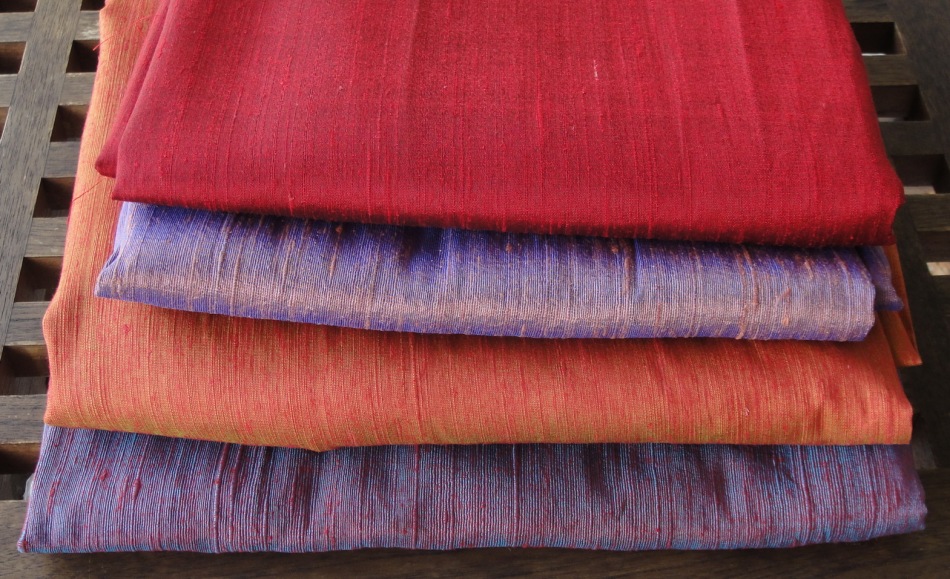Why do great artists allow their failed works to be published?
Some nice interiors, though.
(Of course, an Italian director who fails to show you a good interior must be mentally retarded).
The usual story is Orhan Pamuk: one reads two of his books (Red, Snow), gets excited (wow!), goes out and buys everything the man has ever written only to discover that… nothing beyond the first two (or three — White was OK, too) – books are worth reading. Marco Bellocchio recently delivered the same bait-and-switch: hooked me with Buon Giorno, Notte, and L’Ora di Religione, only to let me seriously down with Il Regista di Matrimoni. Why does this happen?
Partly, the problem is the production system: a novelist is expected to produce a novel a year; a film-maker, a film a year – because “the market expects it: if you do not, you drop out from public view, become forgotten and have to start from scratch”. This is actually not true, but this is the official industry party-line pushed heavily by agents and promoters who live on the stream of new works and artists come to believe it. But this annual procreation adds up to something like 40 works over a lifetime. And no one – not even Michelangelo – can possibly have in him enough material for 40 masterpieces, especially if his life becomes reduced to turning out novels (or films). (To write a novel, just like making a film, takes a lot of time). To make an interesting novel (or film) one has to live, experience, and reflect, i.e. get away from his desk/camera; and there is just no time for any of it if you are “successful”. Truly great film directors (e.g. Kubrick) and great novelists (e.g. di Lampedusa) know it and go slow – that is, they shuddup when they have nothing to say.
I would be prepared to pay serious money to know the truth behind works like Bellocchio’s Il Regista or Pamuk’s Black. Did they get published/released because the author has come to believe in his own infallibility (“yes, it does seem weak when I look at it, but perhaps my eyesight has gone weak, how can I possibly turn out a bad work, surely, if it is by me, it must be great, and perhaps one day I will see it”) or did they get published because the author/director decided that the public was stupid (“not a great film, I know, but they can’t tell anyway, why worry about it too much”).
Why worry about it? A Chinese proverb explains why: a tiger dies and leaves its skin, a man dies and leaves his reputation.
Why write?
To please Andrew —————-
Her last letter to me ended with the usual exhortation for me to please write. You do it so well, she said, it is all so interesting, you tell us all those things we ignoramuses don’t know. [Tricky words from a university professor, published novelist, and someone rather famous in her own country — especially when such words are addressed to someone entirely unknown, anonymous, and without credentials].
Ah, yes, well, thank you. I guess all those years of traveling and reading, of living an odd lifestyle in all sorts of odd places where other people who share my interests do not usually go, let alone live, have not been entirely in vain… why, given the gift of the lifestyle, of the first-hand experience, it would have been proof of utter imbecility of me if I did not make at least some independent observations… so perhaps I did figure out a thing or two which may not have occurred to others, not because those others are dim, but because these things simply could not have occurred to them — because there haven’t been there, they haven’t seen what I have seen. So perhaps I do have something to say, however insignificant it may be.
But I don’t seem able to explain it — no one seems to understand what I think I am trying to explain… or even notice that it just might be any way important. Or care. The fault must be entirely mine, of course — if a speaker isn’t getting through to a crowd, it isn’t the crowd’s fault — but the truth is that I am no longer worried about it… it doesn’t seem to matter to me anymore if anyone does understand. Or care.
I do write, of course — like you, I have been writing all my life. I have been writing as an aid in thinking — I don’t seem to understand what I think until I see what I write — but I have never cared to be published, for some odd reason I have never been ambitious that way. It just doesn’t seem such a big deal to me to be on a book shelf or to be mentioned in a newspaper or in a book review. (I was once a fashion model; my mother kept all the magazines and calendars in which I featured, but I trashed them all the moment I received them. If anything, I was embarrassed by them).
It is true that at one point I did publish a successful blog and that when I did it, at the time, I did go out of my way to promote it. But I didn’t do it for fame or to shine or to exist (some people seem to exist only to the extent that they exist in other people’s minds, but I have always felt secure in the knowledge that I exist, even on five-day solitary hikes in the mountains): I did it because I imagined that the internet, then young, offered a way for like minds to meet, to find each other, to talk. In the end I am not sure that I succeeded in proving that: I am not sure I really found any “like” minds… I know I found plenty enough “unlike” minds. I have met others, too, who have been gentle and generous — like you — but, I repeat, even in those cases I don’t think I have met any “like” minds.
If anything, talking to people on that blog about art and literature I have discovered what I have been discovering all my life, that I don’t really understand other people. A scientist-philosopher once published a huge hit of a paper in which he argued that we (“we, cognitive scientists”, that is) could never understand what it was like to be a bat on account of the animal’s unique sensory system (echolocation). Be that as it may, I find that I cannot imagine what it is like to be other people!
I have spent the last two years reading memoirs and letters of many prominent thinkers and I have discovered that their likes and dislikes, their desires and ambitions and fears were all very odd to me — as was the way they reasoned about them. I am sure the feeling is mutual and this disparity, this gulf, is one reason perhaps why I seem unable to explain myself; and the conviction of the vastness of this gulf, now stronger then ever, is the main reason why I no longer try to explain. I mean… if by some miracle I managed to convince someone that the theory of art he has learned in art 101 and which everyone seems to accept and which fuels all the furious production and all the auction house bidding and all the museum building and going… if I convinced someone that there was something fundamentally wrong with that theory… that it was only a plausibly sounding falsehood… and, if response to all my argument, a light lit up in their heads saying “aha!”, would they really understand that which I am trying to say? Or would they understand something completely different and would I have any clue as to what they got out of the conversation?
And — why should I worry about that at all?
Quick and dirty rules of thumb for more efficient cultural life
Cultured life entails many risks. The chief risk is – waste of time. The amount of culture available for consumption compared to one’s limited days on earth is practically limitless and the vast majority of it is garbage.
Because time lost is never found, every hour wasted is an irreparable loss. (And sometimes it is worse: reading an indifferent book is only a waste of time while one is reading it; but reading a bad book about which one subsequently thinks with revulsion or disgust ruins more than the time spent reading it).
How to avoid expending one’s precious, dwindling resource — time — on stuff that does not deserve it?
This is tricky business because so many works attempt to deceive us as to their quality: they pretend to be original or high brow or ambitious. (They put on names such as “symphony” or “ode” or “novel”; they adopt the style of masters; quote or make references; pretend to be a meaningful response to great works; etc. etc. etc).
One must develop quick guidelines – “rules of thumb” – to allow one to detect-and-neutralize garbage before the damage is done. Some such rules are extremely efficient: e.g. some require that you do not go near certain category of works at all (e.g. biopic, music fusion); others can deliver a verdict within minutes (last night I aborted a movie after 4 minutes).
As new forms of deception are constantly invented, new defensive rules of thumb must be constantly developed and adopted. Here are two new rules I adopted this week:
1. Avoid books with clever titles (e.g. How to Live: Or A Life of Montaigne in One Question and Twenty Attempts at an Answer or How To Be A Great Artist On The Example Of Thomas Mann). A clever title betrays an effort expended on the cover and great books don’t need catchy covers. (Vide “Doktor Faustus”).
2. Avoid concept books (Jarosław Mikołajewski, Rzymska Komedia, attempts to be a series of essays about Rome using the Divine Comedy as a guide: this makes no sense, I can’t believe I let myself be so easily duped).
That it is perfectly possible to be rich and idle and do nothing cultural for five minutes
(Nothing vaguely cultural going on there for five minutes)
[We interrupt our interrupted programing again [programmus interruptus is our specialty] to bring you this newsflash]
I have been planning to write an essay on Jerzy Stempowski — in my book, the literatus par excellence — the only man I have ever read whose writing style matches that of Russell – not a single spare, wasted word; a prose so stripped of fluff — so full of meaning — as to appear skeletal (burgeoning); the argument races so fast through the text, one has to read slowly, for fear of falling behind — and meaning to begin the essay with the observation that he was a kind of fruit typical of his climatic zone — Podolia.
Like Korzeniowski (“Conrad”), Szymanowski, Lechon, Iwaszkiewicz, Neuhaus — the A list — the B list is an arm long — he grew up on a largish property whose owners, idle and isolated as they were from the rest of the world, were want to beat the blahs with… culture. Multilingual (Polish, Russian, French, German), classically trained (Greek and Latin), they read voraciously, wrote extensively (mainly letters and memoirs, but also manuals, chronicles, genealogies, dramas in the Greek style, novels in the French), composed and performed music (piano played well enough to handle Chopin and Beethoven was de rigeur, amateur opera performances with neighbors not an unusual pastime), and spoke and thought of the world in a manner reflecting their deep reading: off the cuff quotes from Marcialis, or Machiavelli’s Discourses on Livy — not meant to impress but a natural turn of mind — the way some of you might refer to Saturday Night Live (or whatever else you refer to). (They had no television in Podolia). They were also well traveled — mainly in the Romance South — between which and Podolia they often divided the year; and they imagined themselves a Mediterranean people accidentally cast in the North of the continent (ego Romanus sum, wrote their sixteenth century ancestors). Sicilia and Podolia are much alike, wrote one of them, meaning great geographical beauty, fabulous fertility, long history, changing political fortunes, layers of historical influences, a baffling (and fertile) mix of languages and religions (in Podolia: Ukrainians, Poles, Jews, Armenians, Russians, Greeks, Karaites, Tartars, Germans).
Which is why Wyspa Montresor, a book about Montrésor, a Polish feudal fief in France (Indre-et-Loire) is such a profound surprise: it is a kind of collage of voices of three-dozen different people — mostly family members — associated with the property, documenting the life of its half-Podolian owners in the 19th and 20th centuries. That life is colorful (the family was related by marriage to both Hohenzollerns and the House of Savoy, lived east and west, participated in French politics as well as Polish, etc.); tragic (it is hard not to see the twentieth century as a plot to eradicate them — everyone robs them — Russian revolutionaries, Ukraininan freedom fighters, German conquerors, their own domestics, the Soviet regime, the Polish People’s Republic, even Giscard d’Estaing’s farm policies); but above all — shocking: the family — in the 19th century among the richest in Russia, certainly among the most landed in Europe — appear to have been… cultural idiots: there is not a single mention of any book, any opera, any museum, any painting. It’s all about hunting — and mostly of the dumb French variety in which the beaters drive the animals towards stationary shooters who spend the whole day shooting — thousands of animals — without the least expenditure of energy or brain-power (but develop a pretty strong forefinger).
Why is it a shock?
It is a shock because, in my generosity, I have always imagined the present (apparent) decline in cultural interest among the higher echelons to the disappearance of the economic class who in the past embodied cultural life: by which I meant the economic class with 1) the free time to engage in culture and 2) the financial resources to pay for it — in short, Veblen’s “leisure class”: land aristocracy, the agrarian rentier class. (Stempowski himself, in his bibliophilic La Terre Bernoise, makes a similar claim regarding the cultural lives of Swiss peasants who used to engage in folk art until, suddenly, cities began to grow thus creating a demand for village products, and thereby robbing the peasant of his free time).
I am now made to realize that for a cultured class to arise a third element must be present: an interest. Without it, it turns out, it is perfectly possible to be rich and idle and do nothing cultural for five minutes; a free, rich person can remain a cultural idiot all one’s life.
Incroyable.
The raw silks of Thailand
“Raw silk” is silk woven from “the first spin”. Silk cocoons are dumped in boiling water, whereupon the glue holding the string together dissolves and the pot becomes full of mingled, endless thread. One grabs it anywhere and begins to “spin” — rolling it between his fingers while pulling what emerges from one’s hand onto the spinning wheel — trying to get as thin a thread as one can — i.e. one made up of as few fibers as possible. The first spin is invariably a little rough and bumpy, thicker in places and thinner in others as it is knotted, mottled, and various bits of flotsam adhere to it. Later re-spinnings eventually work out the kinks, producing very thin, uniform thread; which is used to weave fine cloth like satin; but the first-spin — in places as thin as the real McCoy, elsewhere as thick as hemp string — can also be used to weave cloth. This is known as Raw Silk. It produces the texture you see above: rough to the touch, uneven, with pronounced individual threads, a bit like the bark of a tree.
Shot silk is silk woven with contrasting warp and weft colors, resulting in a cloth which appears to gleam and shift colors as you turn it before your eyes. These four examples are, top to bottom, red and black, orange and blue, orange and red, and blue and red. Note how they gleam around the fold: this effect — the unique property of shot silk — is especially strong when the cloth is worn as clothing and the wearer moves: she appears to shimmer.
Shot silk is especially effective in satin silk, a type of weave which uses the thinnest, finest thread, and leaves long stretches of individual threads unwoven (“floating” along the surface); this makes the cloth easy to damage, but gives it smooth surface (“smooth as silk”) and brilliant sheen: it seems like the cloth has been woven from pure sunlight reflected on water.
Weaving raw silk as shot silk, on the other hand (as these examples all are) produces a different — and extraordinary — effect: the seamless shifting of colors between the colors of the warp and the color of the weft — the shimmering of light reflected on water — is interrupted by the rough feel created by the the uneven thread. As you bring your face closer to the cloth, the liquid smoothness resolves into dry roughness: it is a lot like a tender kiss suddenly turning into a bite.
The colors of which these four are made up — red, purple, orange — are the basic colors of the Thai language. Purple (Si Muang) and orange (Si Seet) are the two most popular colors in Thailand, seen everywhere: in homes, in clothing, in company colors, on official logos. Not for Thais the dullness of less is more: nature would not allow it; among the intense colors of South East Asia’s nature, “less” really does look like less.
Ten years ago, Kad Luang (“The Old Market”) in Chiang Mai had at least a dozen shops selling silk, both raw and satin, lined along the walls with a fantastic range of colors, starting with white on the left, going through various shades of white (“Monsoon clouds”, “Moon in August”, “Tiger tooth”) to shades of grey to shades of beige to shades of cream, and so on and so on, to umpteen shades of green, umpteen shades of red, umpteen shades of purple, ending, at last, on the far right, at the far end of the store, in several shades of black.
Today only three shops remain and they have, between them, at most 20 meters of linear shelf-space of colored silk; you’d be lucky to find four reds to choose from. The shop owners, there day in and night these twelve years, have not noticed the change, it has been so gradual. But the truth is that silk retail is dying.
Why?
It isn’t the prices: it costs in Thai Baht what it cost ten years ago, a modest 25% climb in dollar terms (between $12 and $18 per meter today). Rather the problem is on the demand side: the government rule that all government employees are required to wear Thai silk on Fridays has been rescinded; marketers have convinced the feeble-minded that denim and spandex are more chic; but, mainly, tailors have gone and closed.
Why do tailors close?
Who knows?
Twenty years ago I tried, in vain, to convince an otherwise intelligent and enterprising Polish man, that clothes made to measure will cost him less and fit him better than an off-the-shelf Ferragamo, but he refused to hear good sense. Perhaps, like many people, he felt helpless in his inability to visualize what he would like for himself. When asked by the master craftsman “Would sir like a double-breasted jacket or a single-breasted one?” most people reply “Oh, I don’t mind” meaning not that they do not care, but that they don’t have a clue what they want. (An apt metaphor for the whole of their life). The store with ready made clothes offers three choices — which has the virtue of being easy to choose from, even if none is especially good; but the tailor offers endless opportunities; which is, despite Hollywood propaganda to the contrary, not what people want. Don’t ask me what I want. I don’t know what I want. I want everything. I want nothing.
Tracking down my old tailor last month, after three years’ absence, I discovered he had moved to the suburbs and his waiting time is now not three days but — three months. This is not a measure of his success but a measure of the profession’s failure: no one else sews anymore; he is the last tailor shop left in town (not counting the fake, tourist “suit and two shirts” shops which do not actually know how to sew, just how to sell). His prices aren’t up, just like the flat prices of silk, but his waiting times are. His customers are old timers who had learned in better times how to have things tailored (i.e. how to visualize what they want and then instruct it) but can’t afford a higher price: they will rather wait three months than pay more. The younger generation have the money, just no clue what they could tailor, or even that they could.
And yardage — yardage will only sell if you can sew it. If you don’t know what to do with it, you’re not going to buy it, are you?
This is how the demise of one profession (tailoring) leads to the demise of another (weaving). But, hey, no loss without compensation: you can buy 80-dollar T-shirts from LuLu now, mostly in shades of grey, in machine-spun spandex.
I went out and bought four meters of every length of shot raw silk I liked, figuring that, at this rate, in two years’ time when I return again, there won’t be any left.





















Recent Comments